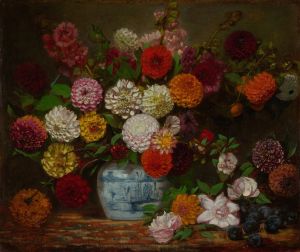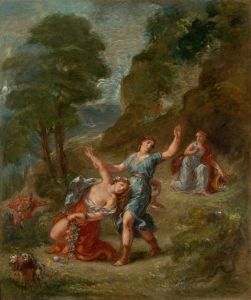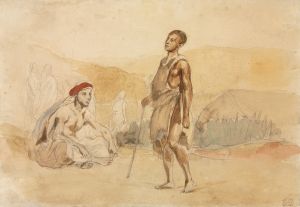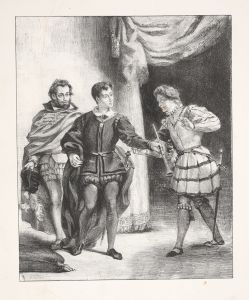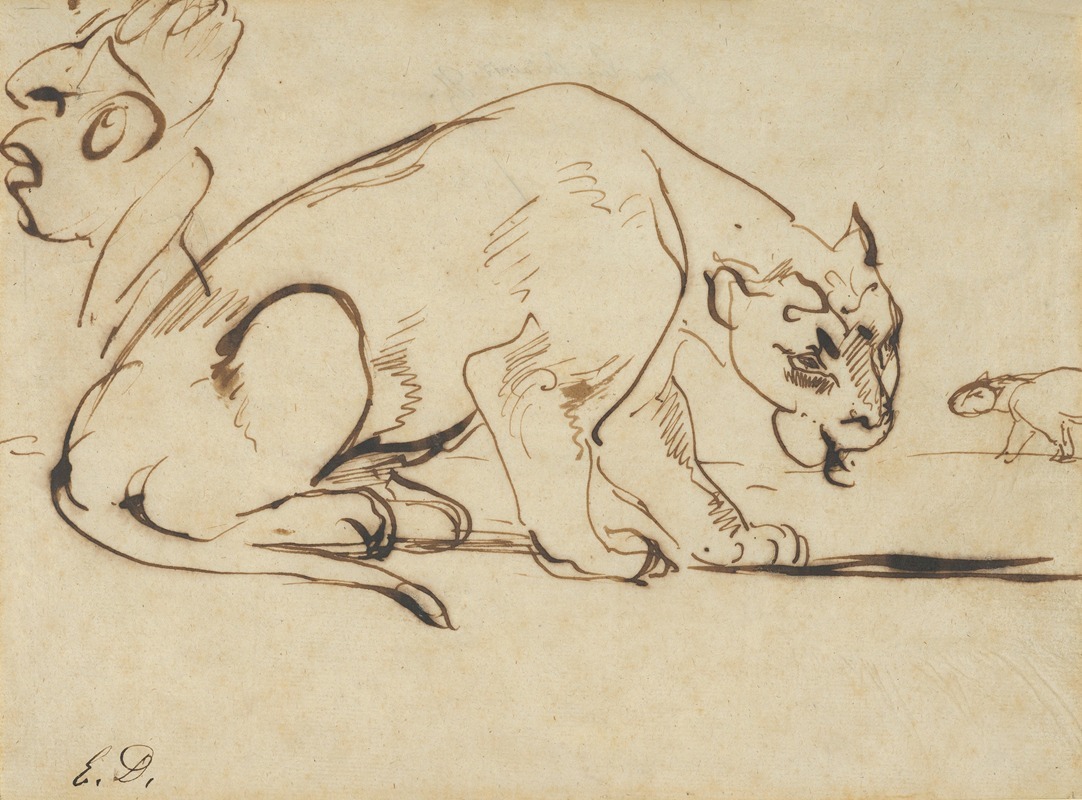
A Lioness and a Caricature of Ingres
A hand-painted replica of Eugène Delacroix’s masterpiece A Lioness and a Caricature of Ingres, meticulously crafted by professional artists to capture the true essence of the original. Each piece is created with museum-quality canvas and rare mineral pigments, carefully painted by experienced artists with delicate brushstrokes and rich, layered colors to perfectly recreate the texture of the original artwork. Unlike machine-printed reproductions, this hand-painted version brings the painting to life, infused with the artist’s emotions and skill in every stroke. Whether for personal collection or home decoration, it instantly elevates the artistic atmosphere of any space.
"A Lioness and a Caricature of Ingres" is a lesser-known work by the renowned French Romantic artist Eugène Delacroix. Delacroix, born on April 26, 1798, and passing on August 13, 1863, was a leading figure in the Romantic movement, celebrated for his expressive brushstrokes and his emphasis on color and movement, which contrasted with the more linear and restrained Neoclassical style of his contemporary, Jean-Auguste-Dominique Ingres.
This particular work, "A Lioness and a Caricature of Ingres," is intriguing due to its dual focus on both an animal subject and a caricature of another artist. Delacroix was known for his fascination with the animal kingdom, often depicting wild animals with a sense of dynamism and vitality. His interest in animals was not merely artistic but also scientific, as he studied them closely to capture their essence and movement accurately.
The lioness in this work exemplifies Delacroix's ability to convey the power and grace of wild creatures. His depiction of animals often carried symbolic meanings, reflecting themes of freedom, strength, and the untamed aspects of nature, which were central to the Romantic ethos.
The caricature of Ingres included in the work adds a layer of complexity and insight into the artistic dialogues of the time. Ingres, a prominent Neoclassical painter, was known for his precise draftsmanship and idealized forms, which stood in contrast to Delacroix's more emotive and color-driven approach. The inclusion of Ingres in caricature form may suggest Delacroix's commentary on the artistic tensions between Romanticism and Neoclassicism. Caricatures were a popular means of satire and critique during the 19th century, often used by artists to express their opinions on their peers and the art world.
Delacroix and Ingres had a well-documented rivalry, representing two opposing schools of thought in the French art scene. While Ingres focused on line and form, Delacroix prioritized color and emotion. This rivalry was emblematic of the broader cultural debates of the era, as artists and intellectuals grappled with the changing tides of artistic expression and the role of art in society.
The painting itself, while not as widely recognized as some of Delacroix's other masterpieces like "Liberty Leading the People" or "The Death of Sardanapalus," offers valuable insight into his artistic philosophy and the cultural context of 19th-century France. It reflects Delacroix's skill in blending different subjects and themes to create works that are both visually compelling and intellectually engaging.
In summary, "A Lioness and a Caricature of Ingres" is a testament to Eugène Delacroix's mastery of Romantic art and his engagement with the artistic debates of his time. Through the juxtaposition of a powerful animal figure and a caricature of a rival artist, Delacroix not only showcases his technical prowess but also his ability to infuse his work with layers of meaning and commentary on the art world of his era.






